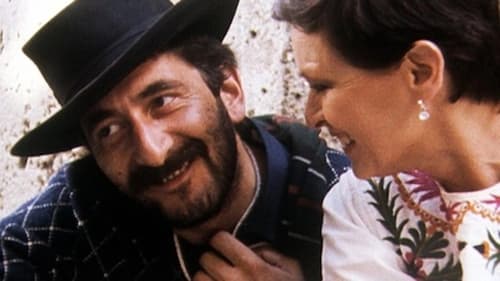
Writer
Not Vital, the internationally renowned, black hat-toting, Engadin-born artist, has seen more and achieved more than he could ever have dreamed. And yet his fabulating and playful inner child drives him restlessly on to fathom ever new realities. Although his works are scattered across the continents, every one of them originated from his childhood in the mountains. They reflect his longing for wonders and real adventures. Director Pascal Hofmann takes us on a mesmerising journey through space and time into the fascinating thought processes and creative works of this headstrong spirit.

Director
Not Vital, the internationally renowned, black hat-toting, Engadin-born artist, has seen more and achieved more than he could ever have dreamed. And yet his fabulating and playful inner child drives him restlessly on to fathom ever new realities. Although his works are scattered across the continents, every one of them originated from his childhood in the mountains. They reflect his longing for wonders and real adventures. Director Pascal Hofmann takes us on a mesmerising journey through space and time into the fascinating thought processes and creative works of this headstrong spirit.

Editor
When director Daniel Schmid grew up, his parents ran a hotel in the Alps, and this singular setting was to influence his film. Rather by coincidence he came to Berlin in the early 1960s and became part of the new German wave. Schmid worked with, among others, Wenders and Fassbinder, for example as an actor in Wender’s The American Friend. He met Ingrid Caven, who was to play a diva in several of his films. This is a documentation of a part of modern European film history and a good analysis of artistry and how it corresponds to the individual behind the camera. A wealth of archival footage brings us close to many directors and actors in Schmid’s circle. If you’ve never seen a Daniel Schmid film, you are sure to want to after watching this portrait of his life.

Director
When director Daniel Schmid grew up, his parents ran a hotel in the Alps, and this singular setting was to influence his film. Rather by coincidence he came to Berlin in the early 1960s and became part of the new German wave. Schmid worked with, among others, Wenders and Fassbinder, for example as an actor in Wender’s The American Friend. He met Ingrid Caven, who was to play a diva in several of his films. This is a documentation of a part of modern European film history and a good analysis of artistry and how it corresponds to the individual behind the camera. A wealth of archival footage brings us close to many directors and actors in Schmid’s circle. If you’ve never seen a Daniel Schmid film, you are sure to want to after watching this portrait of his life.



